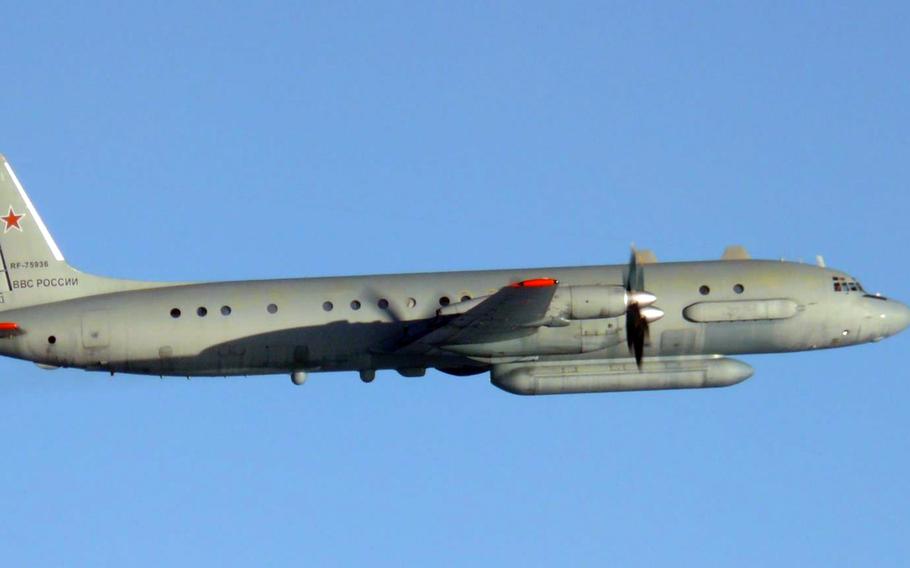
A Russian Ilyushin IL-20M surveillance plane flies near Japan on Feb. 12, 2025. (Japan Air Self-Defense Force)
A Russian military surveillance plane flew through the Alaska Air Defense Identification Zone on Wednesday but posed no threat to U.S. security, according to North American Aerospace Defense Command.
A lone Ilyushin IL-20 Coot flew through the international zone and did not enter either Canadian or U.S. air space, according to a command news release Wednesday. The IL-20 is a four-engine turboprop used to gather electronic intelligence, according to combataircraft.com
Canadian Armed Forces Capt. Rebecca Garand, a NORAD spokeswoman, could not immediately provide further information about the flight by phone Wednesday.
“This Russian activity in the Alaskan ADIZ occurs regularly and is not seen as a threat,” the release said.
NORAD sortied two F-16s and one KC-135 air refueler to identify and monitor the Russian aircraft.
On Tuesday, the Japan Air Self-Defense Force scrambled fighters to intercept two Russian Tu-95 Bear bombers and two fighters over the Sea of Japan, according to the Japan Joint Staff.
The Russians flew from the mainland, then turned northeast to skirt Japanese territorial airspace off the coast of Sado Island, Niigata prefecture, a news release said. The Russians’ flight lasted from morning to afternoon.
“We will continue to monitor Russian military movements in the airspace surrounding Japan with great interest and will take all possible measures to ensure vigilance and surveillance,” a Joint Staff spokesman said by phone Thursday. Some Japanese government officials speak to the press only on condition of anonymity.
An air defense identification zone, or ADIZ, begins where sovereign airspace ends 12 nautical miles from the coastline. While not universally recognized, the identification zone serves as a buffer area where aircraft are expected to identify themselves for national security purposes.
Russian aircraft most recently flew through the Alaskan zone in July. Two Russian Tu-95 Bear bombers and two Russian Su-35 Flanker fighters flew for three hours through the zone, which covers millions of square miles, including large portions of the Arctic Ocean, the Bering Sea and the northern Pacific.
In April, two Tu-95 bombers, one Tu-142 F/J reconnaissance and anti-submarine plane, one A-50 Mainstay early warning plane, and two Su-35 Flanker fighters flew through the identification zone for about 2 ½ hours over the Bering Sea.
On Sept. 23, a Russian Su-35 fighter made a close pass of an American interceptor, which drew a rebuke as unsafe and unprofessional from the head of NORAD at the time.
Stars and Stripes reporters Alex Wilson and Hana Kusumoto contributed to this report.